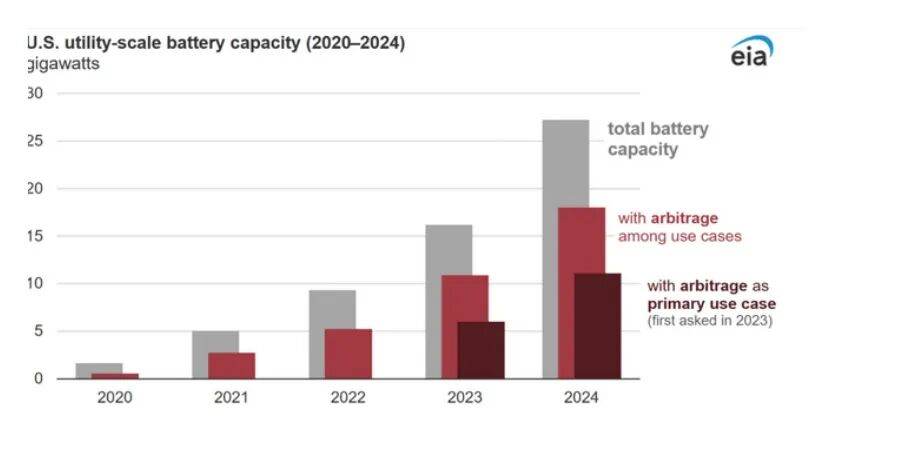Welcome to GM Tech
Welcome to GM Tech
Utility-scale battery storage has become one of the fastest-growing segments in the U.S. energy market. According to the U.S. Energy Information Administration (EIA), most large-scale battery storage projects in operation today generate revenue primarily through electricity price arbitrage—buying electricity when prices are low and selling it back to the grid when prices are high.

Key Findings from the EIA Survey
The EIA’s annual survey, which collects detailed data from facilities of 1 MW or larger, highlights how the role of battery storage has shifted in recent years. Since 2023, operators have been required to specify the primary use case of their storage systems, providing clearer insights into market trends.
Beyond Arbitrage: Other Revenue Sources
While arbitrage dominates, battery storage systems in the U.S. also provide a range of other valuable services:
Notably, the installed capacity dedicated to arbitrage exceeds that for frequency regulation by about 4.5 GW, and frequency regulation capacity is about 3 GW higher than that used for balancing renewables.
Regional Insights: California and Texas
These two markets illustrate how regional dynamics shape storage strategies. In California, low-price charging and high-price discharging strategies have proven effective, while in Texas, ancillary services have historically delivered strong returns.
The Evolution of Arbitrage Strategies
Industry experts note that arbitrage is becoming increasingly complex. As Ali Karimian and Alden Phinney of GridBeyond explained, the rapid deployment of storage has intensified competition, requiring operators to adopt advanced optimization strategies to achieve returns above market benchmarks.
In other words, the future of storage profitability lies not in simple buy-low/sell-high tactics, but in integrated, risk-adjusted solutions that combine arbitrage with ancillary services and renewable integration.
Looking Ahead
The EIA will release updated data for 2025 in June 2026, providing further insights into how storage operators are adapting to evolving market conditions.
As the U.S. energy transition accelerates, utility-scale battery storage is proving indispensable—not only for arbitrage but also for enabling renewable integration, enhancing grid reliability, and supporting decarbonization goals.
Please Read On, Stay Posted, Subscribe, And We Welcome You To Tell Us What You Think.


Copyright @ 2025 GM Tech All Rights Reserved.  Network Supported
Network Supported
Sitemap / Blog / Xml / Privacy Policy